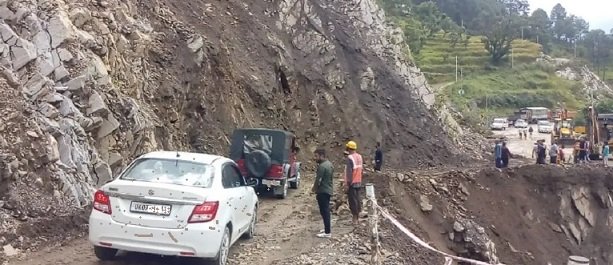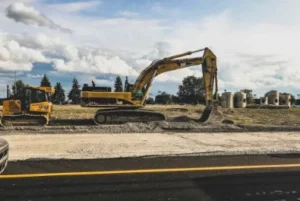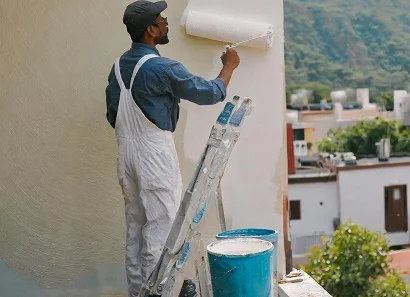Building Better Roads in Mountains: The Power of Technology and Innovation
When it comes to constructing roads in mountainous regions, there are numerous challenges that need to be overcome. Harsh weather conditions, weak and brittle terrain, and the constant threat of erosion can make building and maintaining roads a daunting task. However, with the advent of the latest technologies, there are innovative solutions that can help us create better and more durable roads in these challenging environments.
The Problem with Traditional Road Construction
Traditional road construction methods often fall short when it comes to mountainous terrains. The use of conventional tar and asphalt may not be sufficient to withstand the harsh weather conditions and the constant movement of the earth. This can lead to frequent road damage, erosion, and costly repairs.
Furthermore, the disposal of plastic waste has become a significant environmental concern. Plastic takes hundreds of years to decompose, and improper disposal can lead to pollution of land and water bodies. Finding a way to repurpose plastic waste while improving road durability is a win-win situation.
The Solution: Mixing Tar and Plastic
One innovative solution that has gained traction in recent years is the mixing of tar and plastic to create a more robust and durable road surface. By incorporating plastic waste into the road construction process, we not only find a practical use for this non-biodegradable material but also enhance the road’s ability to withstand harsh weather conditions and the natural movements of the terrain.
The process involves melting plastic waste at high temperatures and then mixing it with the tar. This mixture is then applied to the road surface, forming a strong and flexible layer that can withstand heavy traffic, extreme temperatures, and the erosive forces of nature.
The Benefits of Using Tar and Plastic Mixtures
The use of tar and plastic mixtures in road construction offers several significant benefits:
1. Enhanced Durability:
The addition of plastic to the road surface improves its durability, making it more resistant to cracks, potholes, and erosion. This means fewer repairs and maintenance, resulting in cost savings in the long run.
2. Improved Weather Resistance:
The plastic content in the mixture helps the road withstand harsh weather conditions, including heavy rain and extreme temperatures. This is particularly important in mountainous regions where rainfall can be intense and rapid temperature changes are common.
3. Eco-Friendly Solution:
By repurposing plastic waste in road construction, we contribute to reducing the environmental impact of plastic pollution. This innovative approach helps to address the issue of plastic waste disposal while creating a more sustainable and eco-friendly infrastructure.
4. Increased Flexibility:
The plastic content in the mixture adds flexibility to the road surface, allowing it to better adapt to the natural movements of the terrain. This flexibility reduces the risk of cracks and damage, ensuring a longer lifespan for the road.
In summary, building better roads in mountainous regions is no longer an insurmountable challenge. By harnessing the power of technology and innovation, we can create road surfaces that are not only more durable but also more environmentally friendly. The use of tar and plastic mixtures offers a practical solution to repurpose plastic waste while improving road quality and resilience. With this approach, we can pave the way for safer and more sustainable transportation infrastructure in mountainous areas.
However, in the developing world, it’s still a long way before this technology can find the foothold and improve the remote connectivity of mountains in a long lasting manner and without much ecological damage.
Status of mountain road construction in Developing country like India
For example, ‘all weather road’ in Uttarakhand, India is an ambitious project to connect the holy shrines, called ‘Char-Dham’. But the technology used in paving the road is mostly the same bitumen based with incremental improvements of machine application.
In 2023, Ministry of Road Transport & Highways, Govt of India collaborated with ‘Japan International Cooperation Agency’ (JICA) for improvement of mountain road infrastructure, particularly in mountainous hill areas, like in Himachal Pradesh, North East, and Uttarakhand. The project included building tunnels and bridges in the mountains, but then tunnel construction through blasts may have its inherent risks in weak Himalayan terrain. A few landslides along the construction areas have already proved this point. A holistic approach is required to involve the latest trends. Scientific pros and cons need to be assessed objectively wherever the road construction technology is to be applied.
In Japan, the sensors for health monitoring of roads are deployed at many places along the road. And the data coming from those sensors is routinely used for road maintenance and upgradation of road construction technology. However, the developing countries like India are far behind in implementing such tech-enabled deployment at large scale. This data can also objectively assess the performance of the road construction objectively without any bias. In the absence of such data, the right efforts sometimes got overlooked.

One such effort started around 2015 in India with the use of waste plastic with hot mixes in road construction. Its credit mainly goes to ‘Plastic man of India ‘ – Dr. Rajagopalan Vasudevan, an Indian scientist, – who got Padma Shri, India’s fourth-highest civilian honour, in 2018. A professor in an Engineering college at Tamil Nadu, Dr. Vasudevan developed a method for recycling plastic waste to build more robust, resilient, and affordable streets. This development subsequently found application in road construction in streets, etc. But for the tech-scaling required for highway construction in many mountain areas in the country, it requires joint efforts of all stake-holders, including Indian industry. Though a few startups like Potholeraja, GridMats have done an appreciable work in this regard, the major players in the eco-system have yet to adopt the holistic approach. Also mentionable is Ladakh administration, which decided in 2022 to build roads with growing plastic waste to preserve ecology and reduce the carbon footprint.
Overall, its a long march ahead before the remote and fragile mountains in a country like India can get the long lasting rainproof roads, which not only provide the required connectivity but save the environment effectively with the right mix of best available technologies.


